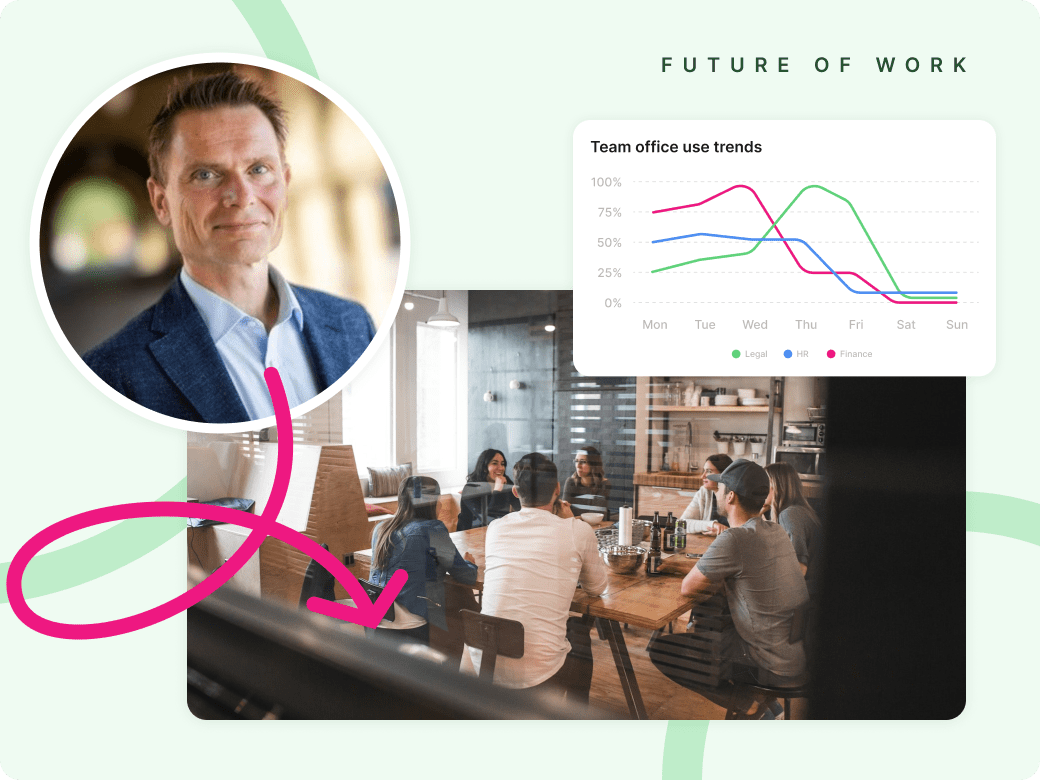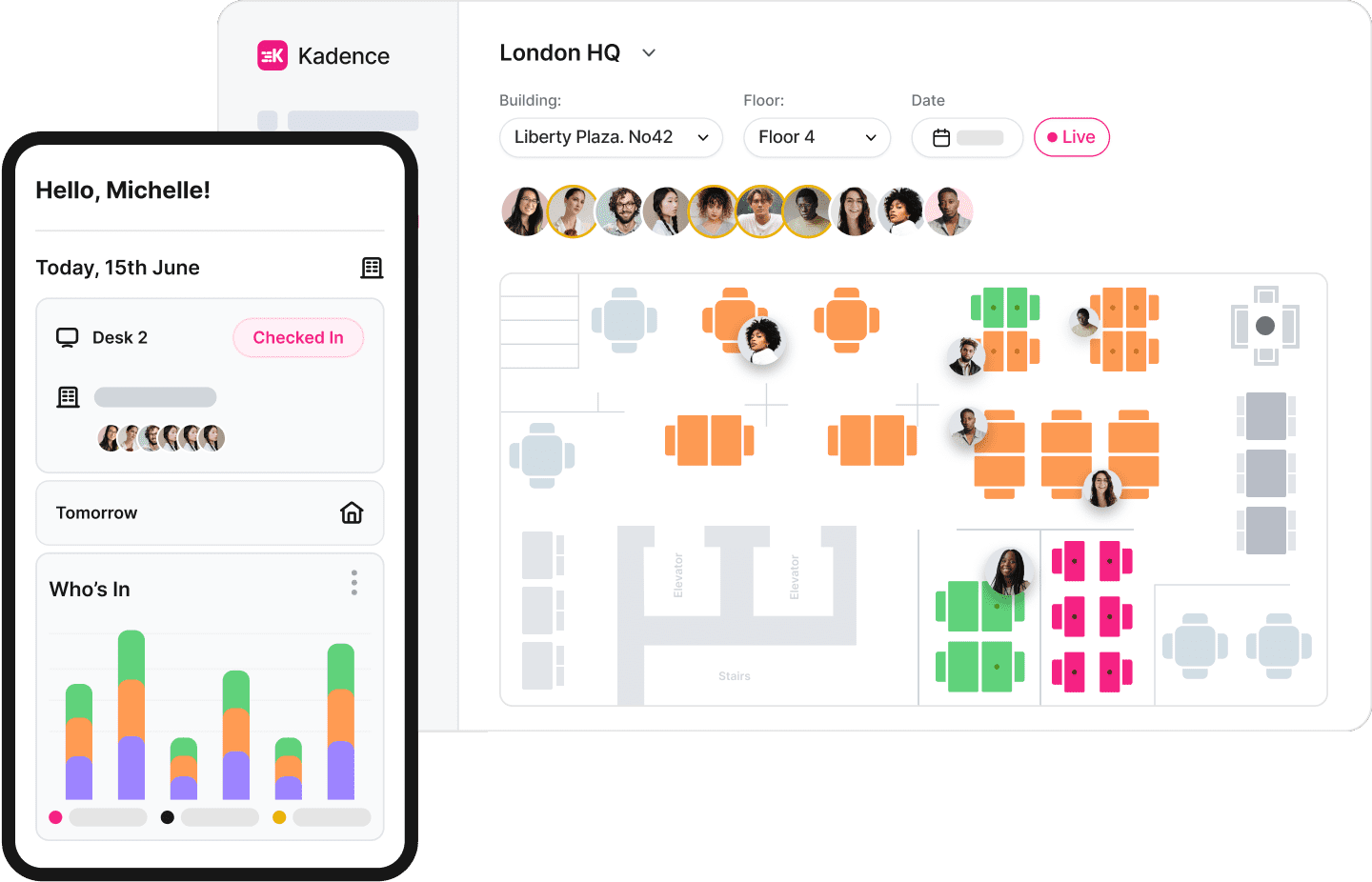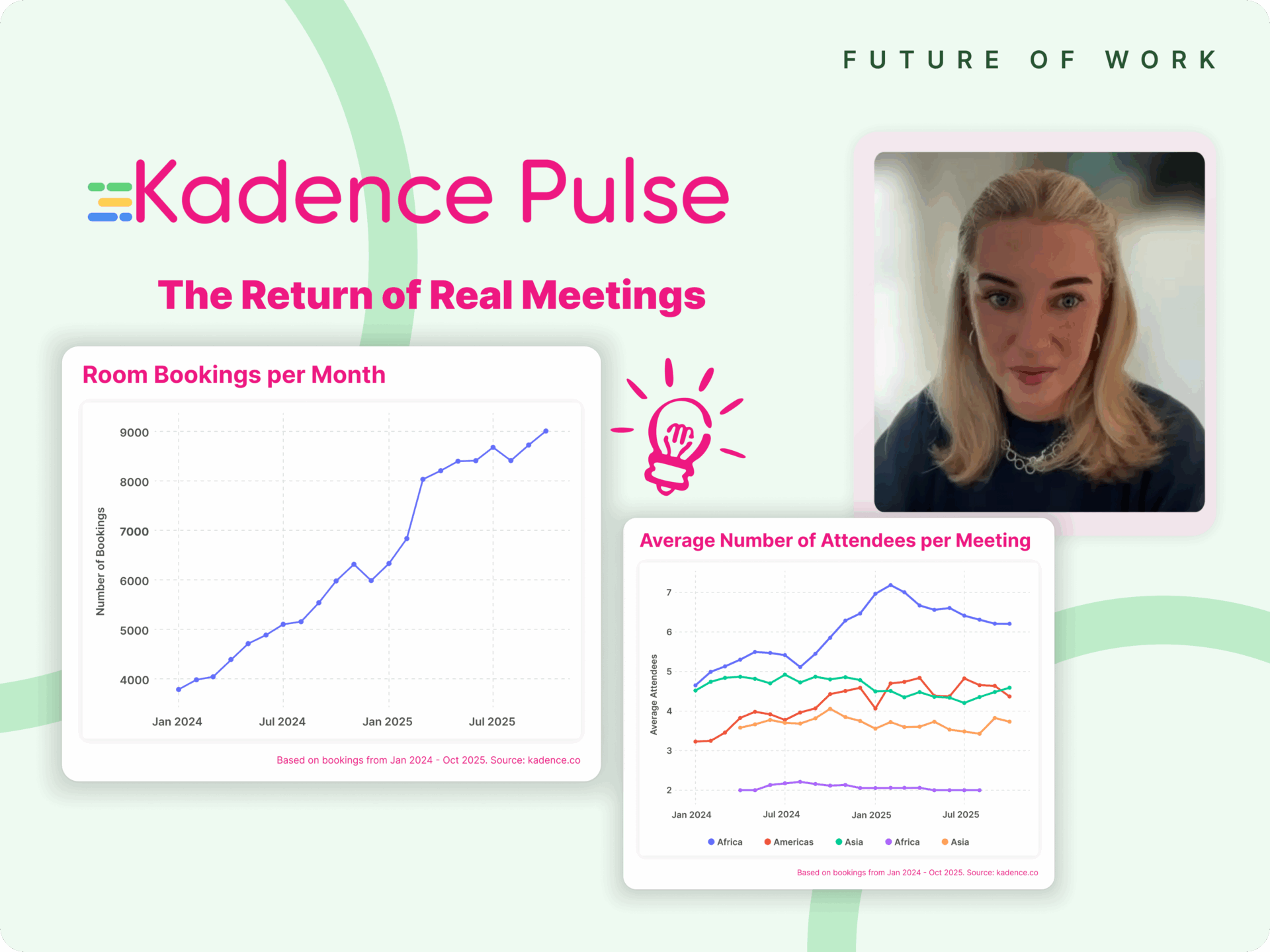In our latest webinar, economist and remote work expert Nick Bloom shared key insights into the evolving landscape of hybrid work. With data suggesting that work-from-home levels have stabilized globally, the discussion focused on what this means for organizations navigating hybrid models and the future of remote work technologies.
Flexible Work Has Stabilized
We kicked off the webinar by discussing the current state of flexible work. Nick presented compelling data showing that work-from-home trends have reached a steady state, with approximately 50-60% of workdays now spent at home. Contrary to media narratives suggesting that remote work is declining, the numbers tell a different story. Drawing from multiple data sources — including surveys, foot traffic analytics, and mobile phone mobility data — highlighted a consistent pattern of stability across industries and regions.
The main reason behind this stability? Hybrid work is profitable. It doesn’t significantly impact productivity, but it does reduce turnover and saves companies money. While there are variations by sector, the overall trend indicates that hybrid work is here to stay.
Challenges Of Managing Hybrid Work
Successfully implementing a hybrid model requires careful coordination. Nick’s research emphasized the importance of structured in-office days to maintain collaboration while avoiding the pitfalls of strict mandates. He pointed out that effective management in a hybrid environment hinges on three key factors:
Coordination: Clear, pre-set office days help streamline team collaboration.
Data Collection: Tracking workplace utilization and employee engagement helps leaders make informed decisions.
Performance Measurement: Shifting focus from time-based monitoring to output-driven assessments ensures productivity remains high.
Key Takeaways To Drive Hybrid Success
Data-driven approach: As hybrid work continues to shape the modern workplace, organizations must take a data-driven approach rather than relying on guesswork. Workplace analytics should be used to refine strategies and ensure employees remain engaged and productive.
Passive tracking through existing infrastructure: Mentorship plays a crucial role in employee retention, and without it, new hires may struggle to see career growth, leading to higher turnover. While employee satisfaction and performance can be difficult to measure, tracking attendance through existing infrastructure such as a combination of badge swipe-ins and Wi-Fi logins can provide a clearer picture.
Trust is a key factor: Conversations about data tracking should be framed transparently to emphasize the benefits for employees. While office utilization fluctuates—especially on Fridays—companies must strike a balance between maximizing use of office space and maintaining employee satisfaction. Hybrid work is here to stay, and the organizations that adapt effectively will be the ones that thrive.
Looking ahead, hybrid work will continue to evolve, particularly with advancements in virtual and augmented reality. These technologies are set to enhance flexible collaboration, making it more immersive and efficient. As organizations adapt, the role of managers will also need to evolve, with leadership styles shifting to support remote and hybrid teams more effectively. Building a successful hybrid work strategy requires a deep understanding of employee needs, flexibility in approach, and the right technological tools to support collaboration and coordination.

Understand how to create a hybrid strategy that works for both your employees and your company performance. Get in touch here to learn more about our custom analytics dashboard offering to take your hybrid insights to the next level.



